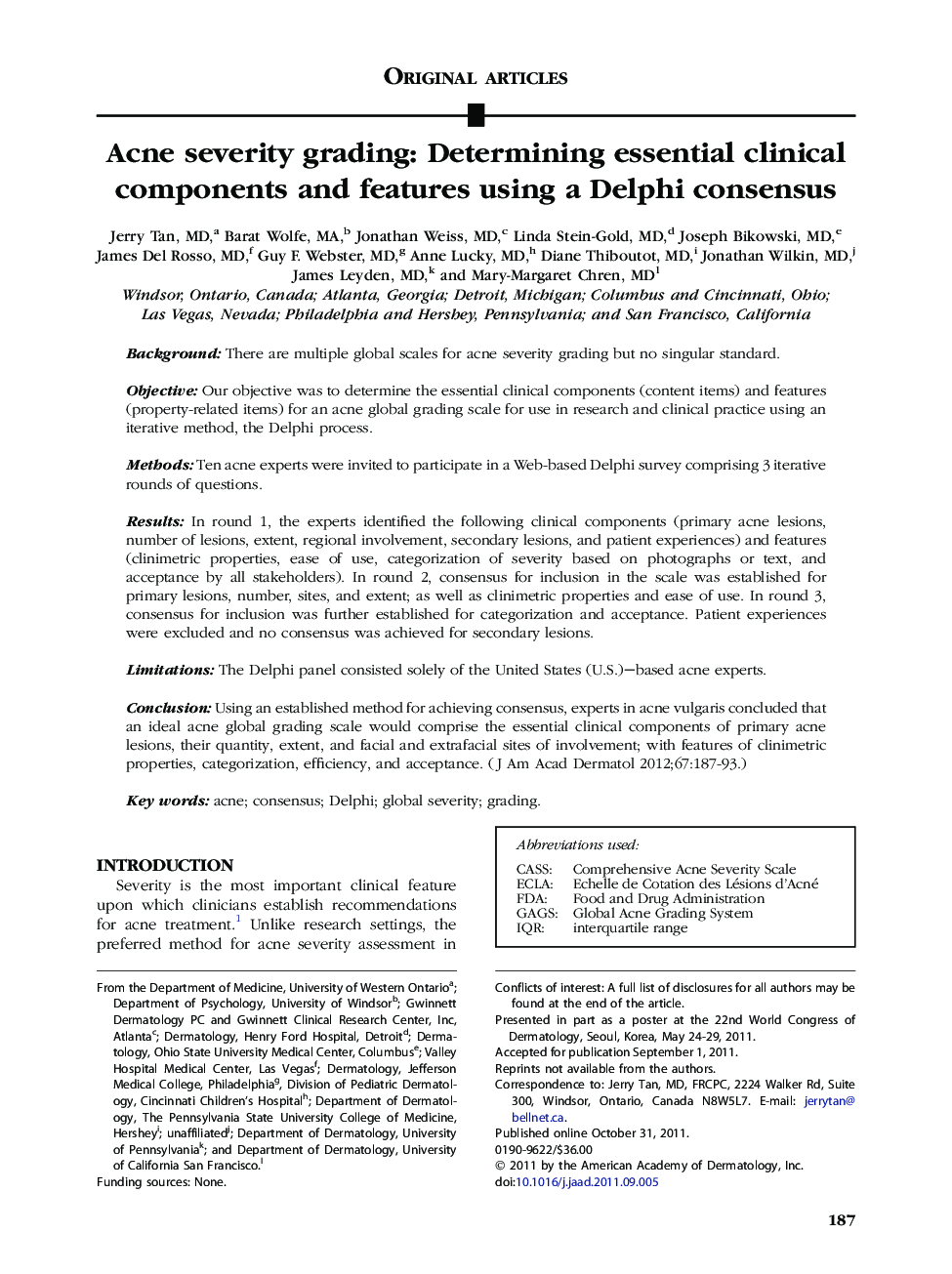| Article ID | Journal | Published Year | Pages | File Type |
|---|---|---|---|---|
| 3205779 | Journal of the American Academy of Dermatology | 2012 | 7 Pages |
BackgroundThere are multiple global scales for acne severity grading but no singular standard.ObjectiveOur objective was to determine the essential clinical components (content items) and features (property-related items) for an acne global grading scale for use in research and clinical practice using an iterative method, the Delphi process.MethodsTen acne experts were invited to participate in a Web-based Delphi survey comprising 3 iterative rounds of questions.ResultsIn round 1, the experts identified the following clinical components (primary acne lesions, number of lesions, extent, regional involvement, secondary lesions, and patient experiences) and features (clinimetric properties, ease of use, categorization of severity based on photographs or text, and acceptance by all stakeholders). In round 2, consensus for inclusion in the scale was established for primary lesions, number, sites, and extent; as well as clinimetric properties and ease of use. In round 3, consensus for inclusion was further established for categorization and acceptance. Patient experiences were excluded and no consensus was achieved for secondary lesions.LimitationsThe Delphi panel consisted solely of the United States (U.S.)–based acne experts.ConclusionUsing an established method for achieving consensus, experts in acne vulgaris concluded that an ideal acne global grading scale would comprise the essential clinical components of primary acne lesions, their quantity, extent, and facial and extrafacial sites of involvement; with features of clinimetric properties, categorization, efficiency, and acceptance.
